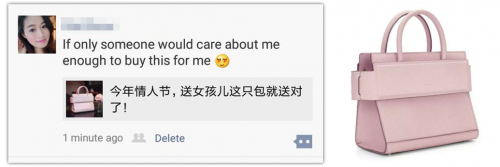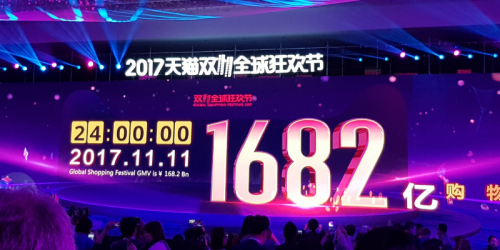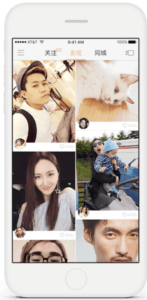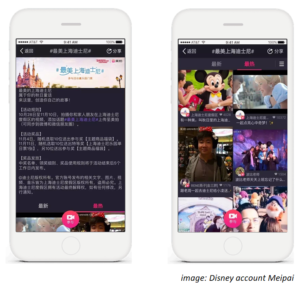As a Christmas promotion, Swarovski designed an “Advent Calendar” box allowing customers to discover a new product every day in the lead up to Christmas, accompanied by a WeChat campaign offering incentives such as a chance to win free prizes after participating in different games in the app. By promoting the QR code that connected to the WeChat campaign in its local store network, Swarovski managed to drive both in-store purchases and awareness of their WeChat platform. The campaign was launched using WeChat’s interactive campaign feature H5, a suite of mini apps that allows for more advanced functionality including click-to-purchase and games. Despite WeChat’s broad range of functionalities and brands like Swarovski showing us record-breaking results of their WeChat campaigns, most luxury brands are still experimenting with it. However, for brands wanting to make an entrance in China, WeChat’s 900 million person user base is one place to start.
Jacco
Who influences the influencers?
Although new KOLs are joining the scene every day, luxury brands tend to merely use a handful of leading fashion bloggers and influencers to play it safe. But as these big influencers are often known to collaborate with any brand as long as they pay enough money, brands using these over-exposed KOLs risk losing the authentic connection with their audience and sense of product exclusivity their brand is associated with. Jing Daily listed four types of influencers that exist outside of the more mainstream names, but manage to maintain a substantive connection with their followers in a sea of competition anyway.
Why Z-lennials will upend Western brands’ China strategy
Although Chinese millennials, with their increasing purchasing power, are considered as the most important consumer group for luxury brands, the next generation is one to watch as well! Z-lennials – those born after 2000 – are starting to reach adulthood next year and their spending power and behavior is expected to expand quickly. As this generation is bound to undergo changes in China’s social structure not experienced by previous generations, their consumption patterns are likely to be different from everything previously considered characteristic of Chinese consumers and will challenge luxury brands in whole new ways.
Online shopping a national pastime: survey
According to recent survey data from KPMG’s China branch, online shopping has become the favourite leisure activity of Chinese netizens. Stimulated by shopping festivals such as Single’s Day and Double 12, online shopping has officially become a national pastime. What doesn’t come as a surprise, in a country where people spend an extraordinary amount of time on mobile devices. “Nowadays in China, the first greeting isn’t whether you’ve eaten, but how many items do you have in your shopping cart”, said co-founder and vice-chairman of Alibaba Group Holdings Joe Tsai at an event for singles Day. And as seventy percent of millennials plans to spend even more on luxury goods and services in 2018, we cannot help but wondering what next year’s numbers will be.
Christmas in China: delusions and differences
Filling the period between Singles’ Day and Lunar New Year, Christmas has been embraced by Chinese consumers as another festival associated with shopping discounts and themed promotions. Many Chinese cities have been illuminated with commercially-funded twinkly lights and neon decorations, and in the last month, 600.000 Christmas trees were bought on Tmall alone. For brands, Christmas provides the perfect opportunity to position themselves as an international, modern brand that’s appealing to China’s millennials. And as there is an opportunity for commerce in China, there will also be the ever-present key opinion leaders more than willing to help brands spread that message. Like many things in China, Christmas has become a fascinating occasion to observe.
How China’s luxury ecommerce market will evolve in 2018
In 2017, Western luxury brands embarked on a migration in to Asia, and China in particular. While the rest of the world’s luxury purchases have slowed, Chines luxury consumers are spending more on luxury goods than they ever did before. And luxury brands are starting to take advantage of this. Over the past months, several high-end brands opened e-commerce stores to sell directly to customers in China. As luxury brands are beginning to establish a direct presence in China, they are taking control over a market that was once dominated by counterfeiters and grey market. What can we expect in 2018 from the evolving luxury e-commerce industry in China?
5 Types of influencers for marketing to millennial Chinese moms
Millennial Chinese moms grew up during an age of prosperity and technical change, leading to different lifestyles and ways of thinking than previous mom-generations. They are trendy, value self-expression, are experienced online shoppers and tend to have a higher spending power than the average Chinese citizen. According to PARKLU, the real opportunity for brands right now lies in China’s third and fourth-tier cities, as the mommy-baby market in these cities is growing fast and market leaders are yet to be defined. Collaborations with mommy influencers can be an excellent way for brands to promote their products and spread their brand’s message in these cities.
How to do social media marketing for your B2B business in China?
While social media marketing has gained in popularity when it comes to B2C marketing, using social media to market services or products to other businesses can be an extremely difficult process. Whereas giveaways and discounts, for example, are effective incentives for B2C companies to get people to follow their WeChat official accounts, what B2B businesses should focus on is to create powerful content instead. And while consumers often decide to follow an official account after the first interaction, the CEO’s and CFO’s who B2B businesses want to attract will likely have to interact with contents on multiple occasions before deciding to follow an account. You can find these and other insights in Technode’s four keys to a successful social media campaign.





















